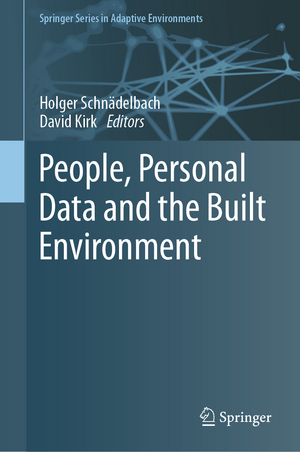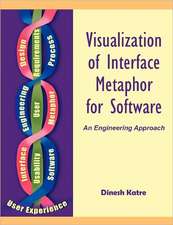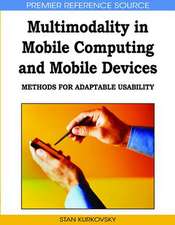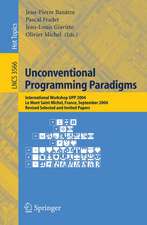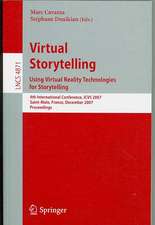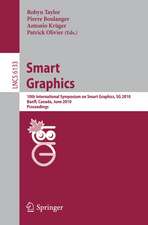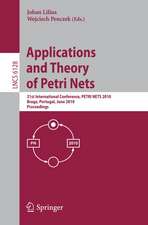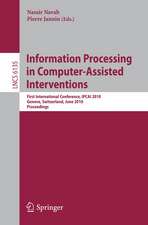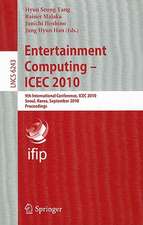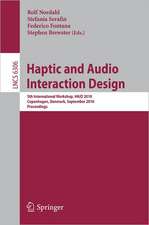People, Personal Data and the Built Environment: Springer Series in Adaptive Environments
Editat de Holger Schnädelbach, David Kirken Limba Engleză Hardback – 19 apr 2019
This book makes a contribution to this on-going discourse by bringing together a community of researchers interested in personal informatics and the design of interactive buildings and environments. The book’s aim is to foster critical discussion about the future role of personal data in interactions with the built environment.
People, Personal Data and the Built Environment is ideal for researchers and practitioners interested in Architecture, Computer Science and Human Building Interaction.
Preț: 762.79 lei
Preț vechi: 953.49 lei
-20% Nou
Puncte Express: 1144
Preț estimativ în valută:
146.01€ • 158.65$ • 122.72£
146.01€ • 158.65$ • 122.72£
Carte tipărită la comandă
Livrare economică 21 aprilie-05 mai
Preluare comenzi: 021 569.72.76
Specificații
ISBN-13: 9783319708744
ISBN-10: 3319708740
Pagini: 248
Ilustrații: VII, 229 p. 79 illus., 62 illus. in color.
Dimensiuni: 155 x 235 x 15 mm
Greutate: 0.51 kg
Ediția:1st ed. 2019
Editura: Springer International Publishing
Colecția Springer
Seria Springer Series in Adaptive Environments
Locul publicării:Cham, Switzerland
ISBN-10: 3319708740
Pagini: 248
Ilustrații: VII, 229 p. 79 illus., 62 illus. in color.
Dimensiuni: 155 x 235 x 15 mm
Greutate: 0.51 kg
Ediția:1st ed. 2019
Editura: Springer International Publishing
Colecția Springer
Seria Springer Series in Adaptive Environments
Locul publicării:Cham, Switzerland
Cuprins
Introduction.- Personal Sustainability (consumption) Data Impact on the Built Environment.- From Building Data to Building Design.- Modern Nomads, Uberization and Semi-Autonomous Pods.- Personal Data Gathering in the Built Environment: a Domestic Abuse Perspective.- Using Behavior Data for Creating Awareness in Motorists About Emission Consequences.- Utilizing Multi-Modal Personal Health Tracking and Health Affordances of the Built Environment.- The Three Roles of "Portals" in their Relationship with "Places".- Merging Evaluation Models of Urban HCI and Casual Information Visualization.- Insight/Inside Learning: A Participatory App for Analyzing the Effectiveness of School Environments.
Textul de pe ultima copertă
Personal data is increasingly important in our lives. We use personal data to quantify our behaviour, through health apps or for 'personal branding' and we are also increasingly forced to part with our data to access services. With the proliferation of embedded sensors, the built environment is playing a key role in this developing use of data, even though this remains relatively hidden. Buildings are sites for the capture of personal data. This data is used to adapt buildings to people's behaviour, and increasingly, organisations use this data to understand how buildings are occupied and how communities develop within them. A whole host of technical, practical, social and ethical challenges emerge from this still developing area across interior, architectural and urban design, and many open questions remain.
This book makes a contribution to this on-going discourse by bringing together a community of researchers interested in personal informatics and the design of interactive buildings and environments. The book’s aim is to foster critical discussion about the future role of personal data in interactions with the built environment.
People, Personal Data and the Built Environment is ideal for researchers and practitioners interested in Architecture, Computer Science and Human Building Interaction.
Caracteristici
First combination of the topics Personal Data and Adaptive Architecture in book form Multi-disciplinary perspectives framed by a common theme Distinct viewpoint of the topical and wider area of Human Building Interaction
